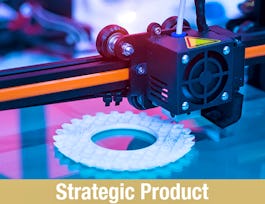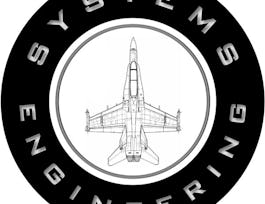Unlock the potential of Micro Electromechanical Systems (MEMS) with this comprehensive course, designed to equip you with the knowledge and hands-on skills to excel in this transformative field.



(15 reviews)
Recommended experience
What you'll learn
Integrate foundational knowledge and material science to optimize MEMS device performance.
Master materials, fabrication techniques, and advanced sensor interfacing.
Design, interface, and characterize MEMS sensors for practical applications.
Develop expertise in sensor output encoding, PCB design, and industry-relevant applications.
Skills you'll gain
Details to know

Add to your LinkedIn profile
8 assignments
October 2024
See how employees at top companies are mastering in-demand skills


Earn a career certificate
Add this credential to your LinkedIn profile, resume, or CV
Share it on social media and in your performance review

There are 8 modules in this course
This module will give you a glimpse of what you will be learning in the course.
What's included
1 video1 reading1 discussion prompt
This module introduces students to the world of Micro Electromechanical Systems (MEMS), providing a broad overview of its technology and applications. Students will explore the key materials used in MEMS fabrication and gain practical knowledge of cleanroom protocols essential for the development of MEMS devices. This module lays the foundation for understanding the interplay between materials, mechanical structures, and electronic components that form MEMS systems.
What's included
5 videos1 assignment1 discussion prompt
This module focuses on the techniques used in MEMS fabrication, specifically oxidation processes and Physical Vapor Deposition (PVD) methods. Students will explore techniques like electron-beam (E-beam) evaporation and thermal evaporation, while also learning how thermal oxidation is used to develop layers for sensor fabrication. The module will also cover numerical calculations for oxidation processes and deposition techniques.
What's included
6 videos2 readings1 assignment1 discussion prompt
This module continues exploring MEMS sensor fabrication techniques with an emphasis on PVD sputtering and Chemical Vapor Deposition (CVD). Students will learn about the sputtering process used to deposit thin films and how CVD techniques are used to create high-quality sensor materials. By the end of this module, students will be able to differentiate between PVD and CVD processes and understand their specific applications in MEMS.
What's included
4 videos1 reading1 assignment1 discussion prompt
In this module, students will dive into the lithographic processes used in MEMS fabrication. Photolithography is a critical technique for patterning microstructures, and students will explore its different stages and techniques. This module also covers numerical calculations related to lithography and discusses how lithography is used in various MEMS applications.
What's included
6 videos1 reading1 assignment1 discussion prompt
This module covers micromachining techniques, including bulk and surface micromachining, that are integral to MEMS sensor fabrication. Students will learn about the development of MEMS-based VOC sensors, and explore advanced techniques like Deep Reactive Ion Etching (DRIE) and Reactive Ion Etching (RIE). The module also introduces wet etching processes and the concept of Miller indices in crystalline structures.
What's included
6 videos3 readings1 assignment1 discussion prompt
In this module, students will learn about sensor integration and interfacing techniques essential for MEMS applications. Topics will include 3D printing, PCB design, radar sensors, and sensor communication protocols. Students will also gain practical knowledge of interfacing MEMS sensors with electronic systems, exploring encoding methods and how sensor outputs are processed and transmitted.
What's included
8 videos1 assignment1 discussion prompt
This final module focuses on the characterization techniques used to assess MEMS sensor performance and explore their real-world applications. Students will learn about wire bonding techniques and various methods for characterizing MEMS devices. Practical applications of MEMS sensors in industries like healthcare, aerospace, and consumer electronics will also be discussed
What's included
6 videos1 reading2 assignments1 discussion prompt
Instructor

Offered by
Why people choose Coursera for their career




Learner reviews
15 reviews
- 5 stars
86.66%
- 4 stars
13.33%
- 3 stars
0%
- 2 stars
0%
- 1 star
0%
Showing 3 of 15
Reviewed on Nov 20, 2024
The detailed breakdown of PVD and CVD techniques was exactly what I wanted.
Reviewed on Nov 13, 2024
In-depth and well structured course on MEMS technology.
Reviewed on Nov 19, 2024
The lab demos are a fantastic addition - very engaging.
Recommended if you're interested in Physical Science and Engineering

Georgia Institute of Technology

University of Colorado Boulder

University of Colorado Boulder

Georgia Institute of Technology

Open new doors with Coursera Plus
Unlimited access to 10,000+ world-class courses, hands-on projects, and job-ready certificate programs - all included in your subscription
Advance your career with an online degree
Earn a degree from world-class universities - 100% online
Join over 3,400 global companies that choose Coursera for Business
Upskill your employees to excel in the digital economy


